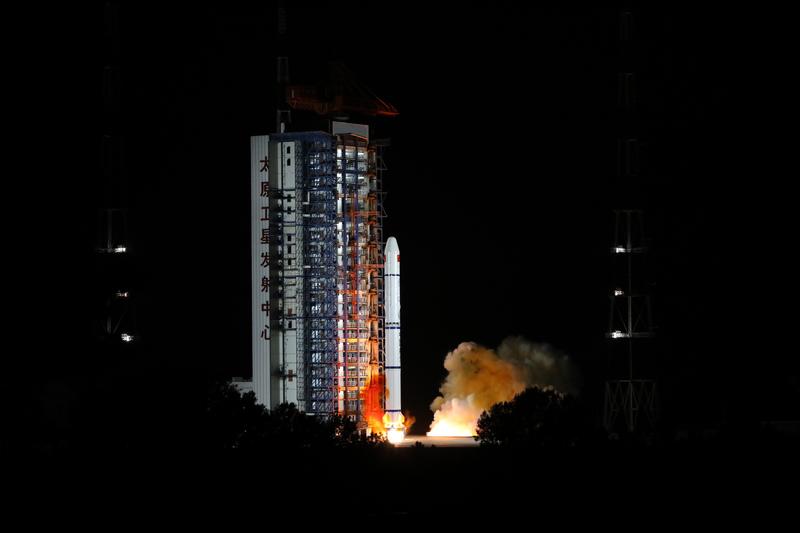 A Long March-2C rocket carrying the HY-1D ocean observation satellite launches from the Taiyuan Satellite Launch Center in Taiyuan, China's Shanxi province on June 11, 2020. (PHOTO / XINHUA)
A Long March-2C rocket carrying the HY-1D ocean observation satellite launches from the Taiyuan Satellite Launch Center in Taiyuan, China's Shanxi province on June 11, 2020. (PHOTO / XINHUA)
TAIYUAN — China sent an ocean observation satellite into orbit from the Taiyuan Satellite Launch Center in north China's Shanxi province on Thursday.
A Long March-2C rocket, carrying the satellite HY-1D, lifted off at 2:31 am (Beijing Time), according to the China National Space Administration (CNSA).
The new satellite will form China's first satellite constellation for marine civil service together with HY-1C, which was launched in September 2018, and double the current ocean observation data, according to CNSA and the Ministry of Natural Resources.
The new satellite will form China's first satellite constellation for marine civil service together with HY-1C, which was launched in September 2018, and double the current ocean observation data, according to CNSA and the Ministry of Natural Resources
ALSO READ: China releases 3D images based on Earth observation satellite
The satellite constellation is expected to improve China's capabilities in observing ocean color, coastal resources and ecological environment, and ramp up support for meteorology, agriculture, water conservation and transportation.
It will also be of great significance to coping with global climate change and building an ecological civilization.
HY-1D, China's fourth remote-sensing satellite for ocean observation, carries five payloads that have similar functions as HY-1C. A scanner can observe ocean color globally, and measure the surface temperature of the seas, every day, with a spatial resolution of 1.1 km.
The imager can obtain coastal water environment, coastal zone and ecological environment of rivers and lakes with a spatial resolution of 50 meters, every three days.
READ MORE: China launches new Earth observation satellite
It is also equipped with an automatic identification system for ships.
The data will be used for resource and environmental surveys, and to facilitate marine disaster prevention and mitigation, sustainable utilization of marine resources, early warning for marine ecology, and environmental protection.
The satellite was developed by the DFH Satellite Co Ltd under the China Academy of Space Technology, and the carrier rocket was produced by the China Academy of Launch Vehicle Technology.
Thursday's launch was the 334th by the Long March rocket series.


